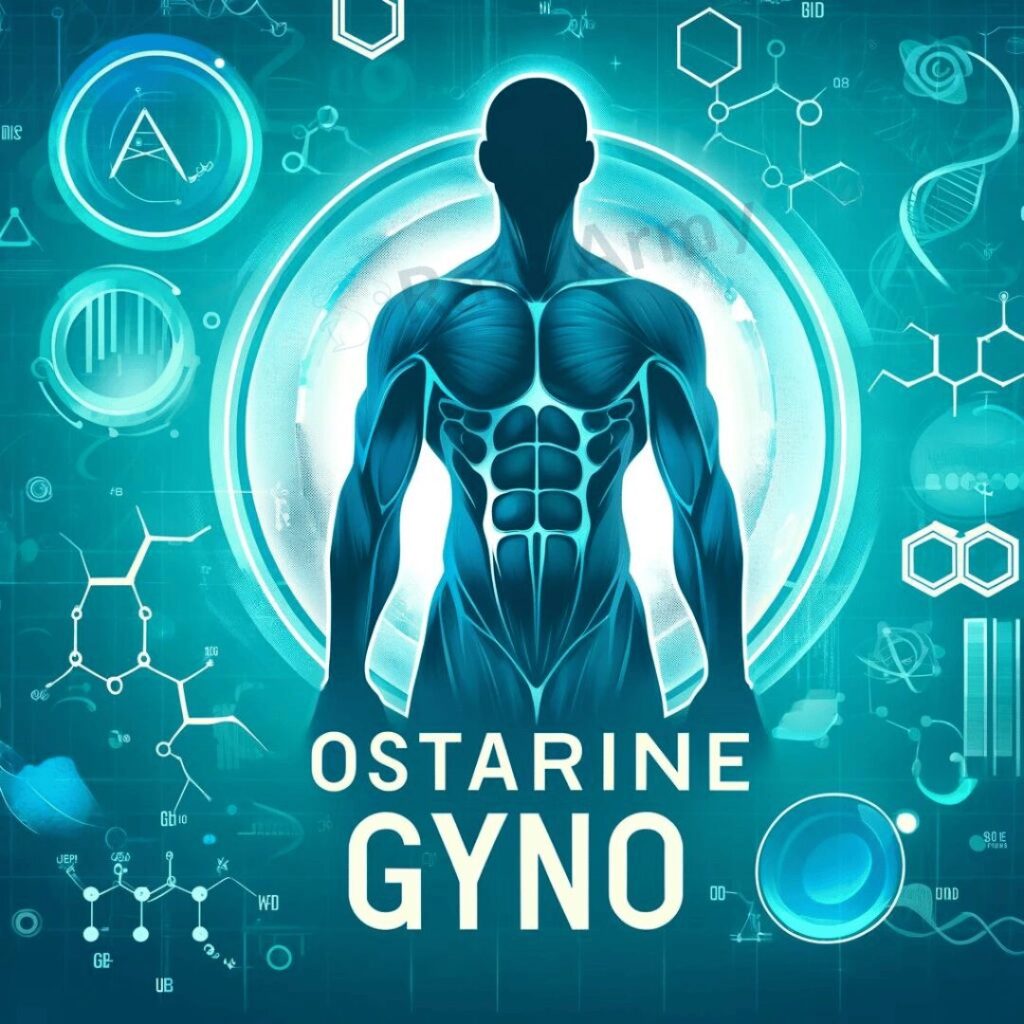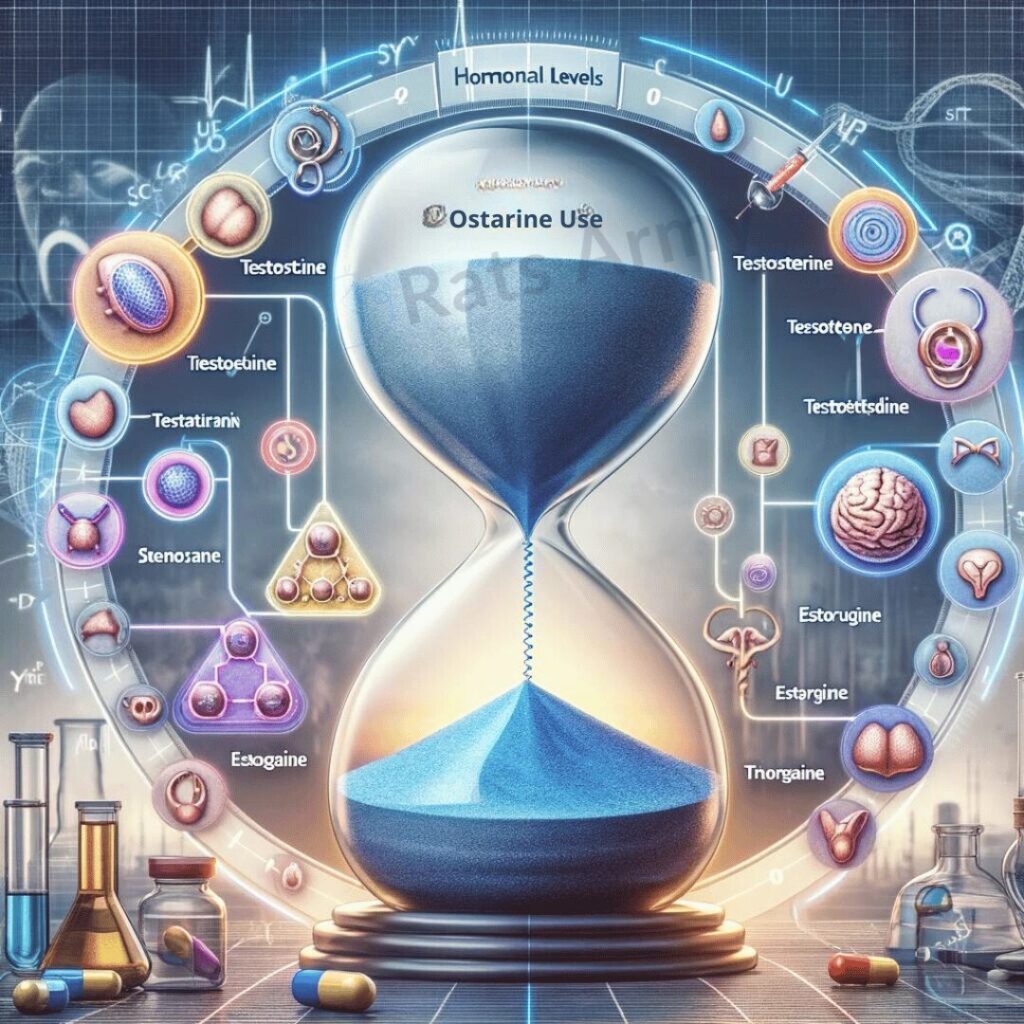Are you concerned about the potential side effects of using Ostarine, specifically ostarine gyno?
Understanding the risks and preventative measures can help you navigate the challenges of using this popular SARM safely.

Table of Contents
ToggleWhat is Ostarine and how is it linked to gynecomastia?
Ostarine, also known by its chemical name MK-2866, is a Selective Androgen Receptor Modulator (SARM) that simulates the anabolic properties of testosterone. While primarily intended for muscle building and fat loss, one of the potential side effects of Ostarine use is gynecomastia, the development of enlarged breast tissue in men.
Short Explanation:
- Androgen Receptor Activation: Ostarine targets and activates androgen receptors selectively in muscle and bone tissues. This selective activity, however, may also inadvertently stimulate breast tissue, leading to gynecomastia.
- Potential for Estrogen Conversion: Although typically associated with anabolic steroids, even SARMs like Ostarine can undergo minimal conversion to estrogen, which can trigger gynecomastia in sensitive individuals.
For More Information: Discover more about Ostarine’s properties on the Rats Army Ostarine MK-2866 page.
Early signs of gynecomastia from Ostarine use
Early detection of gynecomastia can significantly enhance the management and treatment outcomes for users of Ostarine. Here are the symptoms to monitor closely:
Early Warning Signs:
- Chest Sensitivity and Tenderness: This is one of the first indicators of potential gynecomastia.
- Swelling or Lumps Under the Nipple: These changes might suggest the beginning stages of breast tissue growth.
Prevention Tips: Early intervention strategies, including adjustments to dosage and the inclusion of post-cycle therapy, can be critical.
How Ostarine users can prevent or treat gynecomastia
The prevention and treatment of gynecomastia for users of Ostarine involve understanding and manipulating hormonal pathways and responses. Effective approaches are outlined below:
Strategic Interventions:
- Use of SERMs: Drugs such as tamoxifen act as selective estrogen receptor modulators to mitigate estrogenic effects responsible for gynecomastia.
- Implementation of Aromatase Inhibitors: These compounds inhibit the aromatase enzyme that converts androgens into estrogen, thereby preventing gyno.
Further Strategies: Detailed methods to manage side effects are available on Rats Army’s Post-Cycle Therapy for SARMs page.
Dosage guidelines for Ostarine to minimize the risk of gynecomastia
Correct dosing of Ostarine is critical to minimize risks and maximize benefits. Below are the dosage guidelines based on current understanding and user experiences.
Dosage and Cycle Guidelines:
- Optimal Dosage: A daily dose ranging from 10 mg to 30 mg is commonly recommended.
- Cycle Duration: Cycles should ideally not exceed 8-12 weeks to minimize potential adverse effects and hormonal disruption.
Can lifestyle changes complement the use of Ostarine to prevent side effects?
Lifestyle modifications can significantly bolster the effectiveness of Ostarine while reducing the risk of side effects such as gynecomastia.
Effective Lifestyle Modifications:
- Exercise and Physical Activity: Regular resistance training and cardio can help optimize muscle gains and fat loss, influencing hormone levels beneficially.
- Nutritional Adjustments: A diet rich in anti-inflammatory and estrogen-balancing foods can support overall hormonal health.
Long-term effects of Ostarine use on hormonal health
The long-term usage of Ostarine may impact hormonal balance and health, requiring users to be aware of potential consequences and management strategies.
Long-term Hormonal Impacts:
- Suppression of Natural Hormone Production: Continuous use of Ostarine can lead to suppression of natural testosterone levels.
- Potential for Hormonal Dependency and Withdrawal Symptoms: Long-term use may lead to dependency, with withdrawal symptoms possible upon cessation.
Alternatives to Ostarine that do not cause gynecomastia
For users concerned about gynecomastia, exploring safer alternatives to Ostarine could be beneficial.
Safer Alternatives:
- Natural Supplements: Options like creatine, whey protein, and branched-chain amino acids (BCAAs) offer muscle-building benefits without hormonal risks.
- Less Hormonally Active SARMs: Investigating other SARM
s with a reduced risk of hormonal side effects may also be advantageous.
How does Ostarine compare to other SARMs in terms of efficacy and side effects?
Understanding how Ostarine stacks up against other SARMs can help users make informed choices based on effectiveness and safety.
Comparative Analysis:
- Muscle Building Efficacy: Ostarine is known for its significant muscle-building effects, comparable to that of mild anabolic steroids but with fewer side effects.
- Side Effect Profile: Ostarine has a moderate risk profile, with a lower incidence of severe side effects like gynecomastia compared to stronger anabolic steroids.
Information Summary Table:
| Category | Key Points |
|---|---|
| What is Ostarine? | A SARM that mimics testosterone, can cause gynecomastia. |
| Signs of Gynecomastia | Chest tenderness, swelling under the nipple. |
| Prevention/Treatment | Use of SERMs, aromatase inhibitors. |
| Dosage Guidelines | 10-30 mg daily, 8-12 week cycles. |
| Lifestyle Changes | Regular exercise, balanced diet. |
| Long-term Effects | Hormonal imbalance, potential dependency. |
| Alternatives to Ostarine | Natural supplements, other less risky SARMs. |
| Comparison with Other SARMs | Comparable muscle gains, moderate side effect risk. |
Conclusion
In summary, while Ostarine offers significant benefits for muscle building and fat loss, it’s important to be mindful of potential side effects like gynecomastia.
For those looking to optimize their experience with Ostarine or explore safer alternatives, we recommend visiting our recommended sources page for access to the highest quality products and further guidance.
FAQ
What is the main risk of using Ostarine?
Gynecomastia.
This condition, characterized by the enlargement of breast tissue in men, is a notable risk when using Ostarine.
How can gynecomastia be prevented while using Ostarine?
SERMs and Aromatase Inhibitors.
Using selective estrogen receptor modulators and aromatase inhibitors can help mitigate the risk of developing gynecomastia.
What is the recommended daily dosage of Ostarine?
10-30 mg.
This dosage range is recommended to balance effectiveness while minimizing risk.
Are there safer alternatives to Ostarine that do not cause gynecomastia?
Yes.
Natural supplements and some other SARMs offer muscle-building benefits with a reduced risk of hormonal side effects.

